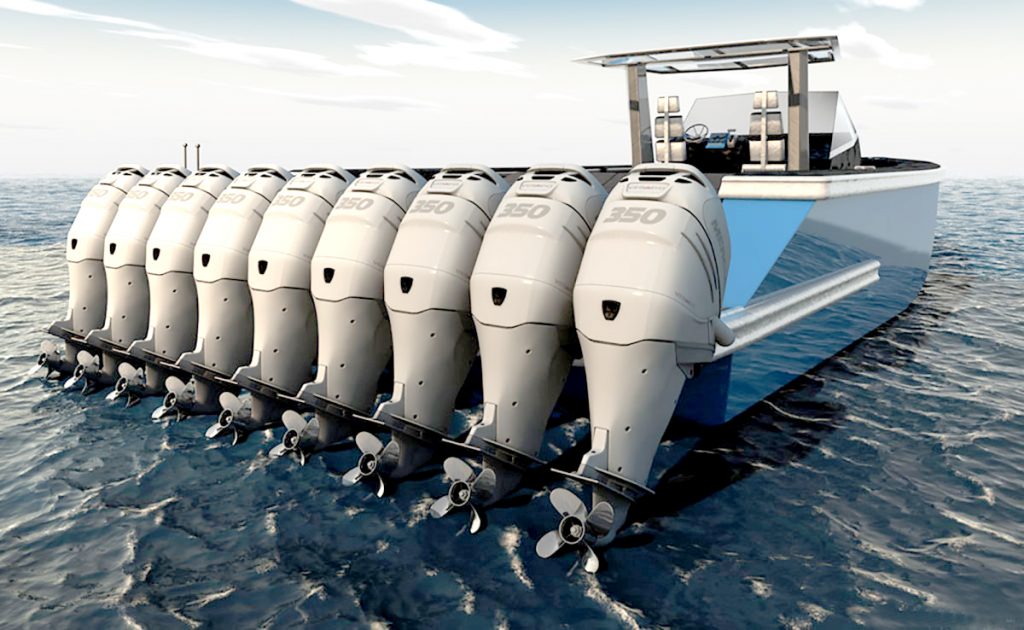You love boats and want to be out on the water for a relaxing weekend, cruising with the family, rafting with friends, enjoying nature in a quiet cove, or hitting the fishing grounds. Some boaters are semi-pro boat racing enthusiasts and race in appropriate venues. All of these activities are fun and appropriate if we follow the rules and practice good judgment. But increasingly there is a force at work in the boating community both from the industry and the consumer side, which is a threat to many mariners’ enjoyment of boating. This force is the desire for excessive power and speed and the inability of inexperienced boaters in dealing with this issue in a safe manner.
There was a time when hours on the water moved at a much slower pace. Pleasure boaters enjoyed the voyage as much, if not more than arriving at the destination. Certainly, this was partly due to the limits of pleasure boat methods and engineering. Up until the early 1930s, our bays and rivers still had large compliments of sailboats used by families for a day’s outing to the beaches, cruising, or even trolling with hand lines off the transom to pick up a blue or weakfish. This technique was very popular with the visitors at the outer beach resorts and great for the slower moving boats of that era, but a change was coming.

The first “Outboard” was invented on Long Island in 1896. Cameron Waterman improved the first engine’s reliability and sold the first 25 engines in 1906. By 1915 he was selling 15,000 per year. These were slow, low horsepower engines but had the convenience of freeing the captain from relying on wind to move from point A to B. With the end of WWII, there were steady improvements, decade by decade, and both horsepower and speed moved up and up. This trend was mirrored by related improvements in inboards and later I.O.s.
But now we are in the era of high speed and power that is just LAPSTRAK NUTS!
It’s not uncommon to see vessels in the range of 30’ and up having four 300hp engines strapped to their transoms. Larger vessels can have five to six 350s back there and the “Captain” will use every bit as he opens up in Sloop Channel or runs up the Amityville and Babylon cuts, or up the Hudson, Shrewsbury, Manasquan and beyond. Everyone on board is partying. The only one keeping an eye out is the “Captain” and that’s when he’s not texting. Does it even enter his mind that he is threatening other boats and his passengers? Not one bit! He is in his “high-speed adrenaline rush” mode. He doesn’t even feel the resistance on his wheel because he now has a Joystick. A JOYSTICK!
Are we boaters or the BLUE ANGELS????
I would like to say I am exaggerating but I’m not. What happens when the vessel hits a sand bar, a submerged piling, or an old jeep engine block (on the extreme southwest corner of the Amityville Cut at low tide?) What happens is you damage some really expensive outdrives if you are lucky? If you are not? Someone is getting hurt or worse. All for the sake of a high-speed joy ride? If that’s what you need, become a NASCAR racer, not a boater, it’s safer for everyone!
So how do we make sense of this super speed/power trend? It’s simple. If you feel you have a need for all those ponies and you have the ability to buy them and fuel them up, that’s your right and I truly hope you have fun with it. All that is asked is that you practice good seamanship. Bone up on your charts. Be lighter on the throttle when sharing the water with other boaters and if you feel the need to really let loose, take it out the inlet, and the sea conditions are right, then you can take it up a notch!
See you from the deck of my Downeaster doing 24 knots!
Be safe,
Captain Eddie
